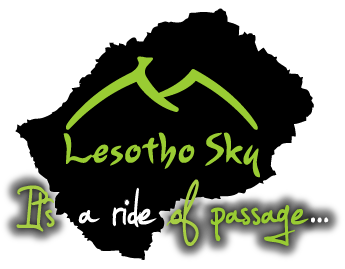
Panaoramic view from the top of Thaba Bosiu – Image source: Katie Barber, Nonbillablehours.com
The 2017 Lesotho Sky is going to be steeped in heritage and culture. We intend to take riders on trails not only loaded with stoke, but rich in Basotho culture. As race organisers, we don’t take our life in Lesotho for granted. We’ve fallen in love with this amazing country and hope that the trails we take people on will reflect our appreciation for this place. It’s true that you can ride almost in any direction and find a piece of single track that will not only blow your MTB brains out, but will awake a new found love for Africa in you.
One of the historical highlights on this year’s route, is without a doubt Thaba Bosiu. The word Thaba means “mountain” and Bosiu means “at night”. This majestic mountain top was once a fortress and the centre of political activity. In the early 19th century, chief Moshoeshoe I established a stronghold on the plateau King Moshoeshoe I and his people moved to Thaba Bosiu from Butha-Buthe following a vicious attack by the Batlokoa.

The 2017 route will take riders right on the edge of the mountain.
At an elevation of nearly 120 meters above the surrounding area, the plateau formed a natural fortress to gather the Basotho people in times of danger. It is a sandstone plateau with an area of approximately 2 km2 and a height of 1,804 meters above sea level. The plateau’s large area meant it could hold enough livestock and provisions to support the people during a lengthy siege. The name mountain of the night comes from the local belief that the mountain grew during the night, leaving enemies who tried scaling it, in a siege for example, felt it was growing as they climbed.

You can see Thaba Bosiu in the background, on the left of the image and Qiloane in the middle. © Cherie Redecker
Thaba Bosiu also acted as Moshoeshoe’s headquarters during the various Basotho Wars. During the first Free State–Basotho War against the Orange Free State in 1858, the Free State’s commandos tried assaulting the stronghold, but met with little success. During the third war against the Free State in 1868, Thaba Bosiu was the only stronghold that wasn’t stormed by the Free State forces. In the time the stronghold remained manned, it was never taken by the enemy. When Moshoeshoe died in 1870, he was buried on Thaba Bosiu.
Close to this mountain is Qiloane Pinnacle. The shape inspired the design of the Mokorotlo (Basotho Hat). Legend has it that the Basotho looked down onto Qiloane from Thaba Bosiu and started weaving grass growing on top of the mountain – that’s how the first hats came about.

Cherie Redecker and Mariske Strauss celebrating their win with their Basotho Hats. Image: Wayne Reiche
The ruins and the graves of various chiefs is all that remain of the settlement on Thaba Bosiu. As a national monument, it is protected land and a well known tourist destination.
Sources

Recent Comments